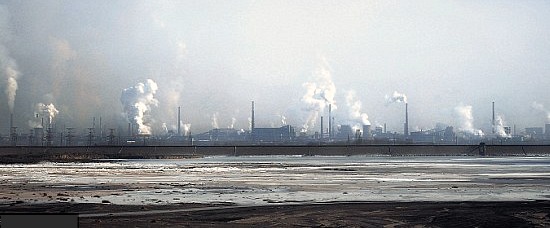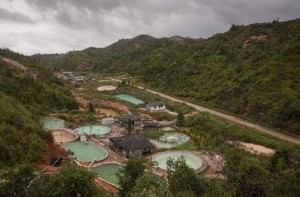
The list of environmental concerns that can be connected with rare earth elements is not a
brief one. Throughout the cycle of mining processes that rare earth elements go through, there is potential for negative effects on the environment. Extracting rare earth elements begins with mining. This is followed by the refining process, and then disposal. All of the stages of mining, refining, and disposal come with unique issues.
Mining
The physical process of removing the ores from the ground is disruptive to the environment.
Most rare earth elements are mined through open pit mining, which involves opening the
surface of the earth using heavy equipment and machinery. Creating this disruption on the
surface of the earth disrupts thriving ecosystems. Furthermore, mines are the point source of release for three major contaminants: are radionuclides, rare earth elements, and dust and metal. Each of these contaminants escapes the mines in different ways and they each have different detrimental effects on the environment.
Refining
The goal of mining is to end up with a mostly pure and usable element that can be utilized in
whatever way necessary. However, the ores that are extracted from the earth do not come
out pure, instead they need to undergo a refining process. This refining process introduces
another set of environmental concerns, mostly revolving around the release of metal
byproducts into the environment. It is very easy for metals to enter the air, ground, or water
sin an environment, and once there it is nearly impossible to remove them. The metals in an
environment can also prove devastating to organisms.
Disposal
The byproduct of mining rare earth elements is usually waste that is full of further threats
to the environment. Generally, waste is categorized into two d ifferent types: tailings and
ifferent types: tailings and
waste rock stockpiles. It is the tailings that are of particular concern as they are full of small,
fine particles that can be absorbed into the water and ground surrounding a particular mine.
Regardless of whether a contaminant is deemed tailings or waste rock stockpiles, however the contamination of the water is the main concern. Water can be contaminated in three ways: sedimentation, acid drainage, and metals deposition, and once contaminated is difficult to restore to its original quality.
Abandoned mine impacts. (n.d.). Retrieved from http://www.tu.org/conservation/abandoned-mines-western-us/abandoned-mine-impacts
Bradsher, K. (2011). Mitsubishi Quietly Cleans Up Its Former Refinery. The New York Times. Retrieved from http://www.nytimes.com/2011/03/09/business/energy-environment/09rareside.html?ref=rareearths
Division of Mineral Resources. (1988). Solution Salt Mining. In Draft: Generic Environmental Impact Statement on the Oil, Gas, and Solution Mining Regulatory Program (13). Retrieved from http://www.dec.ny.gov/docs/materials_minerals_pdf/dgeisv2ch13.pdf
Margonelli, L. (2009). Clean energy’s dirty little secret. Retrieved from http://www.theatlantic.com
Miranda, M., Blanco-Uribe Q., A., Hernández, L., Ochoa G., J., & Yerena, E. (1998). All That Glitters Is Not Gold: Balancing Conservation and Development in Venezuela’s Frontier Forests. Retrieved from http://pdf.wri.org/all_that_glitters_is_not_gold.pdf
Paul, J., & Campbell, G. (2011). Investigating rare earth element mine development in epa region 8 and potential environmental impacts (908R11003). U.S. Environmental Protection Agency. Retrieved from website: http://www.epa.gov/region8/mining/ReportOnRareEarthElements.pdf
U.S. Environmental Protection Agency, Office of Solid Waste. (1995). Human health and environmental damages from mining and mineral processing wastes. Retrieved from website: http://www.epa.gov/osw/nonhaz/industrial/special/mining/minedock/damage/damage.pdf

